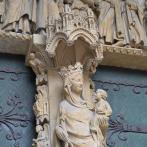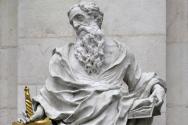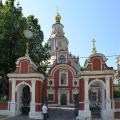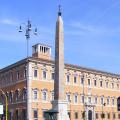0
Countries
Start marking places as "Been Here" to see how many countries you have visited
Browse countries10 oldest ancient obelisks taken away from Egypt
The word ‘obelisk’ is of Greek origin and means a ‘small spit’. The first obelisks appeared in Ancient Egypt. They symbolized the area where the spirit of the Sun lives and were placed in couples near the most important temples. The unique tens-of-meter high monuments showed the greatness of the pharaoh’s power and inspired awe in his subjects. As for their shape, they were built as vertical tetrahedral columns, sculptured from a solid piece of stone, narrowing upwards and ending with a pyramidal summit. The greatness of the ancient obelisks was first appreciated by the Roman emperors. These traces of the extinct civilization and the symbols of the conquered countries were transferred to the capital of the Roman Empire even on the threshold of this era. In the Middle Ages the lost obelisks were restored on the squares of the Eternal city by pontiffs’ directions. Today the main Italian city is considered to be the capital of obelisks: more than a dozen of them have remained. In the nineteenth century, Britain, America and France transported huge columns to their territories and made monuments out of them. The mystery of obelisks has been exciting people for several thousand years now. Scientists are trying to understand how they were made and mounted without stone-cutting machines, powerful tractors and lifting cranes. Mystics associate obelisks with Masons, secret cults and ‘concentrators of energy’. Accidental passers-by and tourists get under the spell of these ancient and perfect creations. A little more than two thousand obelisks exported from Ancient Egypt have remained. The most outstanding and well-known ones are the following.
About 1475 BC, a couple of granite obelisks were placed in front of the Temple of God Ra on the orders of Pharaoh Thutmose III in the Egyptian city of Heliopolis. By the beginning of this era, both steles had been transported by Romans to Alexandria, and had been standing in Kesarium – the temple built by Cleopatra in honor of Marcus Antonius. The hieroglyphs on the pillar’s sides contain the symbols of Thutmose III and songs of praise to the ‘son of the sun god’; later Ramesses II added his name to them. The obelisk appeared on the Victoria Embankment in London in 1878. The complicated transportation of the 21-meter monolith with weight 224 tons was paid by the English surgeon Sir Erasmus Wilson.
As soon as newspapers reported the transportation of the new obelisk to Britain, Americans got inflamed with the idea of having the second ‘needle’. The expensive transportation of the monolith (224 tons) and the pedestal (50 tons) was paid by the magnate W. Vanderbilt. After the traditional Mason corner-stone was laid in the foundation, the obelisk was mounted in New York City’s Central Park (1881). As far back as Romans transported the obelisk to Alexandria, they damaged the base – that’s why ancient masters cast from bronze four crab-bearings, 400 kg each. Today the two surviving original figures are kept in the Metropolitan Museum of Art, and those are replaced by copies.
Two more obelisks created in Thutmose III’s reign were mounted near the Temple of Karnak in 1460 BC in honor of his 30 years on the throne. The inscriptions on the sides praise the ruler’s victories in Mesopotamia. In 357 AD, at Emperor Constantius II’s will both pillars were moved to Alexandria, to celebrate the 20 years of his reign. Initially the steles were enormous – almost 38 meters high and 543 tons each. In 390, Emperor Theodosius I ordered to transfer the first stone to Constantinople. Being transported it split, and only a fragment survived – 20 meters high and with weight 282 tons – which was mounted onto the 6-meter marble pedestal in the center of the race track (now Istanbul’s square Sultanahmet).
The second obelisk of the Temple of Karnak, though moved to Alexandria, was not mounted there. In 357 AD, it was sent to Rome and placed in the Circus Maximus, as the mark of the turn, where it had been standing before the fall of the Roman Empire in the 5th century. The fragments of the stele were discovered among the ruins of the circus under Pope Sixtus V. The pontiff commissioned the architect Domenico Fontana with its restoration. In 1588, the obelisk was mounted opposite the Lateran basilica on the pedestal and decorated with a cross, accounting this for the memory of the Christian emperor Constantine. Although some fragments were lost, the pillar remains the highest obelisk of Ancient Egypt in the world – the granite monolith with weight 330 tons rises up to 37 meters.
Pharaoh Ramesses II was noted not only for his inscriptions on other monuments, but also for creating his own ones. About 1300 BC, a couple of columns were placed in front of the Temple Amon-Ra in Luxor. The sides are inscribed with praise words to the ruler, who proclaimed himself to be the son of the sun god Ra. In the 1830-ies, the obelisks were presented to France, but only one of them was transported to Paris – the other one remained on the left from the entrance to the temple. The 22,8-meter column with weight 250 tons was moved to Paris and mounted on Place de la Concorde in 1836. The gilded pyramid on the top was restored in 1998 by the Egyptian president Hosni Mubarak’s visit to Paris.
Another pair of obelisks named after Ramesses II decorated the main Temple of God Atum, the patron of Heliopolis, 1300 BC. In the first century AD these not too high columns were transported to Rome by Emperor Domitian and placed in the Temple of Isis. In the 16th century, one stele was bought by Cardinal Ferdinand Medici for his Roman villa. In 1790, 6-meter obelisk with weight 9 tons was transported to the Boboli Gardens and placed in the center of the amphitheatre. On the top of the monolith there is a gilded sphere, on the pedestal under it there are four turtles. The inscriptions praise Ramesses, calling him the ‘beloved son of Atum and Ra’.
The second obelisk from the Temple of Atum, which had been transferred by Emperor Domitian, was discovered by the archeologist Rodolfo Lanciani in 1883 in the church Santa Maria sopra Minerva. The 6-meter obelisk was turned into the monument to soldiers who had died in the Battle of Dogali during the war between Italy and Ethiopia, 1887. The total height of the monument equals almost 17 meters; the tables attached to the base contain the names of the 550 dead warriors.
The Flaminio obelisk was built during the reign of the pharaohs Ramesses II and Merneptah in the 1300-ies BC. It stood in the Temple of the Sun in the city of Heliopolis. In 10 AD, it was brought to Rome by command of Emperor Octavius Augustus, together with the Obelisk of Montecitorio. Like the Lateran Obelisk, it stood in the Circus Maximus, and was found together with the latter among the ruins split into three fragments. On the order of Pope Sixtus V it was restored by the architect Domenico Fontana and mounted on the square Piazza del Popolo in 1589. The Egyptian obelisk is 24 meters high, weighing 235 tons; the total height of the monument together with the cross and base equals 36,5 meters. The hieroglyphs contain the names of Ramesses II and his son Merneptah.
In 10 AD, Emperor Octavius Augustus ordered to transfer one more faceted column (22 meters high, weighing 230 tons) from Heliopolis, together with the Flaminio Obelisk. The ruler decided to have it made as a gnomon for a gigantic sun-dial. Before the obelisk had belonged to Pharaoh Psammetichus II from the Saite Dynasty, who had been on the Egyptian throne in 595-589 BC. Approximately in the 10th century the obelisk fell down and was covered with rubbish. The fragments of the Roman sun-dial were discovered in 1502, however it was restored completely only in 1793 by command of Pope Pius VI. The architect D. Antinori restored the obelisk-gnomon on Piazza di Montecitorio. Nevertheless, the sun-dial shows wrong time.
Thanks to Octavius Augustus one more obelisk, which had belonged to a formerly unknown pharaoh, came to Alexandria from Heliopolis. In 37 AD, the column was brought to Rome on the order of Emperor Caligula and placed in the Circus of Nero. The granite 25,5-meter stele took its today’s place in 1586. The order was given by Pope Sixtus V, Domenico Fontana carried it out. A century later, the architect Giovanni Bernini while projecting Piazza San Pietro made it the focus of the square and also decorated the obelisk with the Chigi family’s coats of arms.






















0 COMMENTS